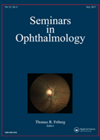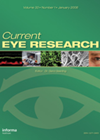
Journal Reviews
Inverted internal limiting membrane flap vs internal limiting membrane insertion technique for large macular holes
This meta-analysis aimed to compare and evaluate the morphological and functional outcomes between the inverted internal limiting membrane (ILM) flap and ILM insertion techniques in the treatment of large macular holes (MHs). The primary outcome measures were defined by the...
Post hoc analysis of the CANTREAT randomised trial
CANTREAT, a Canadian multicentre two-year randomised trial compares treat and extend treatment (T&E) relative to the monthly administration of Ranibizumab in nAMD. Two-hundred and eighty-five treatment-naïve patients with nAMD were randomised to receive either a once-monthly dosing or T&E regimen...
Bromfenac versus betamethasone in diabetic macular oedema
This is a randomised, prospective, single-centre trial in patients diagnosed with diabetic macular oedema (DMO) with central subfield thickness (CST) of 250-500µm, who refused anti-VEGF treatment. Nineteen eyes of 19 patients were randomised to bromfenac (BF) or betamethasone (BM) drops,...
Brolucizumab in age-related macular degeneration, HAWK Study
The aim of the study was to collect additional data on efficacy and safety of brolucizumab 6mg intended for commercialization in age-related macular degeneration (AMD) (with an increase in pH and decrease in polysorbate concentration). The HAWK Study was a...
Effect of heredity on risk of diabetic retinopathy
This study used survival analysis on 2199 patients who had reached vision-threatening diabetic retinopathy to investigate the contribution of heredity to diabetes together with other known risk factors for the development of either proliferative diabetic retinopathy (PDR) or diabetic macular...
Treatment of diabetic macular edema in vitrectomised eyes – comparison of intravitreal dexamethasone implant and posterior subtenon triamcinolone injection
This retrospective study was aimed to compare intravitreal dexamethasone implant and posterior subtenon triamcinolone injection (PSTA) in the treatment of diabetic macular edema (DME) in vitrectomised eyes. Sixty-four (48.12%) patients who had received PSTA and 69 (51.88%) patients who had...
Intravitreal dexamethasone in diabetic macular oedema (DMO) - enhancing the response to anti-VEGF in non- or poor responders
This study aimed to describe the outcomes of a switch back from DEXi (dexamethasone implant) to anti-VEGF therapy in eyes that were treated temporarily with DEXi after an initial poor response to anti VEGF. Twenty-three eyes of 17 patients were...
Does religious fasting affect intraocular pressure or retinal parameters?
Nearly one billion Muslims fast every year during the month of Ramadan. Due to the difference between the lunar and solar calendars, religious fasting time can range from 11 to 17 hours per day. This prolonged abstinence from food and...
Progression of macular atrophy on long-term anti-VEGF therapy for AMD
This retrospective study evaluated the progression of macular atrophy in 53 eyes of 53 patients receiving AntiVEGF Therapy for age-related macular degeneration (nAMD), for at least six years. None of the patients had any macular atrophy (MA) at presentation. MA...
Cystoid macular oedema following retinal detachment surgery
There are limited studies examining the incidence and risk factors for postoperative cystoid macular oedema (CMO) following rhegmatogenous retinal detachment (RRD) repair. Postoperative CMO is thought to be due to pro-inflammatory state, where numerous cytokines lead to tight junction dysfunction,...
OCT biomarkers in asymmetric anti-VEGF response in bilateral diabetic macular oedema
This study aimed to identify optical coherence tomography (OCT) biomarkers for predicting response to anti-VEGF treatment in diabetic macular oedema (DMO). Bilateral DMO patients with asymmetric response to a loading dose of anti-VEGF (ranibizumab / aflibercept) treatment were retrospectively studied....
Outcomes of treat & extend ranibizumab in diabetic macular oedema
This study retrospectively evaluated 118 eyes of 87 patients who received ranibizumab in a treat and extend regimen for diabetic macular oedema (DMO). Data were collected for patients under follow-up for 24 months. After 24 months, patients gained a mean...










